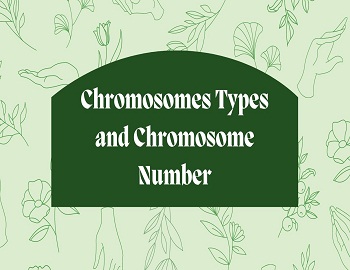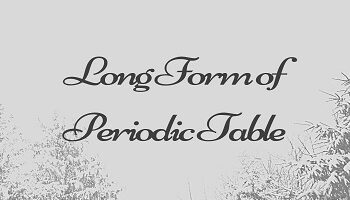Table of Contents
Chromosomes Types and Chromosome Number:
Chromosomes are darkly stained protoplasmic bodies seen only during cell division. The term ‘Chromosome’ was introduced by Waldeyer in 1888 because of its great affinity towards dyes. In the nondividing nucleus and in the metaphase stage the chromosomes are in the form of fine chromatin threads which form an interwoven net. They are most distinct in metaphase and anaphase.
Chromosomes Types:
The chromosomes are of the following types-
(1) Viral Chromosomes- In viruses, a single molecule of DNA or RNA represents the chromosome.
(2) Bacterial Chromosomes- In bacteria and blue-green algae, the heredity material (DNA) is organized into a single circular chromosome. It is formed of DNA alone, without proteins.
(3) Eukaryotic Chromosomes- In eukaryotic cells chromosomes are formed of DNA and proteins (nucleoproteins). During cell division, the chromatin threads condense into distinctly dark stained bodies called chromosomes.
Chromosome Number (Diploid or Haploid):
The number of chromosomes in the somatic cells of higher animals and plants is known as diploid while in the gametes it is haploid. The number of chromosomes is constant in the somatic cells of all the individuals of a species.
The chromosome number is used in the identification of species, and in tracing the relationship within the species and between the species. The chromosome number of some of the animals and plants are given below-
Number of Chromosomes in some Eukaryotes:
| Name of Organism | Somatic Chromosome Number |
|---|---|
| In Animals (Invertebrates): | |
| Paramecium aurelia | 30-40 |
| Hydra vulgaris | 92 |
| Grasshopper | 24 |
| Periplaneta (cockroach-male) | 23 |
| Periplaneta (cockroach-female) | 24 |
| Ascaris megalocephala | 2 |
| In Animals (Vertebrates): | |
| Mus musculus (mouse) | 40 |
| Rattus rattus (rat) | 42 |
| Felis domesticus (cat) | 38 |
| Frog (Rana) | 26 |
| Canis familiaris (dog) | 78 |
| Cow | 60 |
| Equus equus (Horse) | 64 |
| Monkey | 42 |
| Homo sapiens (man) | 46 |
| In Plants: | |
| Allium cepa (onion) | 16 |
| Pisum (Garden pea) | 14 |
| Brassica oleracea (cabbage) | 18 |
| Raphanus sativus (raddish) | 18 |
| Tomato | 24 |
| Triticum vulgare (bread wheat) | 42 |
| Zea mays (Indian corn) | 20 |
| Oryza sativa (Rice) | 24 |
| Sugarcane | 80 |
In anaphase, chromosomes may appear as rod-shaped, twisted or spiral, curved or filamentous. The chromosomes may be of equal thickness throughout or constricted at places. The shape of the chromosomes is usually determined by the type and the position of the centromere. Depending upon the position of the centromere the chromosomes in anaphase may assume the form of a rod, J or V.
Functions of Chromosomes:
(1) Chromosomes are hereditary vehicles carrying genes from parents to offspring.
(2) These control metabolism and other activities of cells by directing the synthesis of required proteins.
(3) These direct various life processes such as cell growth, cell division and cell repair.
(4) These guide development and cell differentiation.
(5) They play an important role in sex determination: autosomes and Y-chromosomes.









Comments (No)